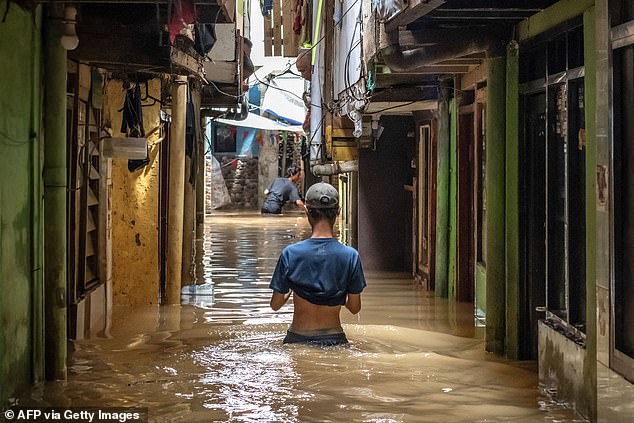
Climate Whiplash Strikes Cities as Scientists Warn of Intensifying ‘Global Weirding’
Climate Whiplash Hits Global Cities, Fueling Extreme Droughts and Floods
A new Water Aid report reveals that major cities worldwide are grappling with “climate whiplash”—sudden swings between severe droughts and floods. Scientists call this unpredictable pattern “global weirding,” warning it could escalate climate disasters.
Cities on the Frontlines
Hangzhou (China), Jakarta (Indonesia), and Dallas (USA) top the list of urban areas facing the worst climate whiplash. These regions endure back-to-back extremes, complicating disaster preparedness. Jakarta, for instance, faced devastating floods in 2024 (see below), while Dallas swung from a 2011 heatwave (40+ days above 38°C/100°F) to record floods in 2022 and 2024.

Flooding in Jakarta, Indonesia, one of the cities hardest hit by climate whiplash (2024).
Study Findings: Climate Flips and Whiplash
The report analyzed rainfall and evaporation data from 100 populous cities over 44 years. Key findings:
- 17 cities suffer “climate whiplash,” with 9 in Asia.
- 20% of cities underwent a “climate flip”: 13% switched to wetter extremes, 7% to drier. Cities like Cairo (Egypt) and Madrid (Spain) shifted from wet to dry, while Lucknow (India) and Kano (Nigeria) flipped from dry to wet.

Spain’s Sau Reservoir during a 2024 drought highlights Europe’s drying trend.
Regional Vulnerabilities
- Asia: 90% of top “wetting” cities and 75% of whiplash hotspots are here.
- Africa/Middle East: Khartoum (Sudan) and Riyadh (Saudi Arabia) face severe drying.
- Europe: All cities are drying, with Madrid and Barcelona experiencing Spain’s worst droughts. Aging infrastructure worsens risks—Paris and Berlin struggle with water shortages amid rising heat.

Paris’s Seine River dried during 2022’s historic drought.
Why It Matters
Climate whiplash strains cities’ recovery capacities. For example, Dallas’s 2022 floods caused highway chaos, while Spain’s drought devastated crops. Professor Katerina Michaelides (University of Bristol) notes, “Places historically wet are now dry, and vice versa,” signaling broader systemic shifts.
Urgent Adaptation Needed
Water Aid warns 90% of climate disasters involve water extremes. Dr. Sean Fox (University of Bristol) stresses, “Risk isn’t just about hazards occurring—it’s about preparedness.” Solutions require updated infrastructure and regional cooperation as climate patterns redefine “normal.”
Top Cities Affected
Climate Whiplash Hotspots:
- Hangzhou, China
- Jakarta, Indonesia
- Dallas, USA
- Shanghai, China
- Baghdad, Iraq
Extreme Climate Flips:
- Wet to Dry: Cairo, Madrid, Riyadh
- Dry to Wet: Lucknow, Surat, Kano

Dallas highways submerged during 2022 floods.
As climate intensification amplifies weather extremes, cities must prioritize resilience to protect millions at risk.


